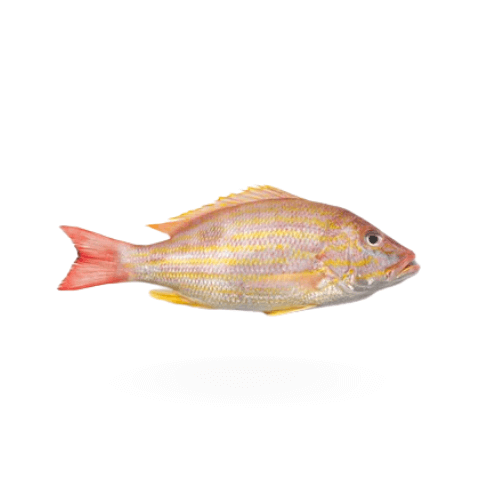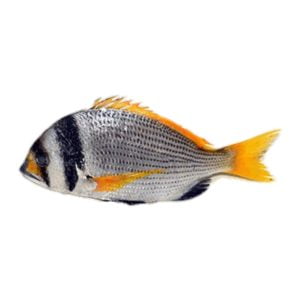Introduction
The lane snapper, the Mexican snapper, redtail snapper, or spot snapper, is a species of marine ray-finned fish, a snapper belonging to the family Lutjanidae. A fish that lives in different habitats and is excelling in eating fish. This is a very easy fish-to-fillet with easy to follow bone structure.
Lane snappers are set apart from other red-bodied snappers by the eight narrow yellow lines that run the length of the fish.
Flavor Profile
Like all other snappers, Lane Snapper has delicate flesh with a delicate flavor. The flesh is near white with darker areas just under the skin, but these do not have a strong taste. Lane snappers are regarded as a great eating fish – mainly because their diet is so varied.
Nomenclature
- English Name: Lane Snapper, Mexican Snapper
- Local Name: Kanulcha
- Scientific Name: Lutjanus synagris
Habitat
Adult lane snappers live in a variety of habitats, but are most commonly observed over reefs and vegetated sandy bottoms in shallow inshore waters. This species has also been reported in offshore waters to depths of 1300 feet (400 meters). Once established, adult snappers remain in the same area for their entire lives.
Catching Method
They are caught using gillnets, bottom trawls, and handlines.
Physical Attributes
They are one of the most eye-catching snappers of the Arabian sea. The color is silvery-pink to reddish with short, irregular pink and yellow lines on its sides. Diffuse black spot, about as large as the eye. The dorsal fin is centered above the lateral line.
Color
On average, the size range is 200 gm to 1 kg per fish. However, other sizes are also occasionally available.
Size
They are preferred to cut as Whole (gutted), headless (gutted), and boneless fillet. The skin has no strong or “off” flavor but shrinking is extreme, so it needs to be removed for most cooking methods. The skin is thin but fairly strong, so fillets can be skinned easily using the long knife and cutting board Method. The skin can be added to the pot when making stock.
Cutting Preferences
This fish is preferred to be cut as Whole, Gutted, and Headless.
Approx. Cutting Yields
- Whole: 100%
- Gutted: 80%
- Headless and Gutted: 55%
- Slices: 55%
- Boneless: 36%
Cooking Preferences
This fish is suited to delicate recipes where its flavor will not be overwhelmed. Skinless fillets fry very nicely in a little olive oil but need a light dusting of rice flour so they hold together. You don’t want much more than that or it will hide the excellent flavor. Fillets hold together well enough for light poaching/frying but boiling in the soup will break them into crumbs.
Health Benefits
- Heart friendly
- Lowers Blood Pressure
- Improves Immune System
- Strengthens the bones
- Improves Skin and Hair health







There are no reviews yet.